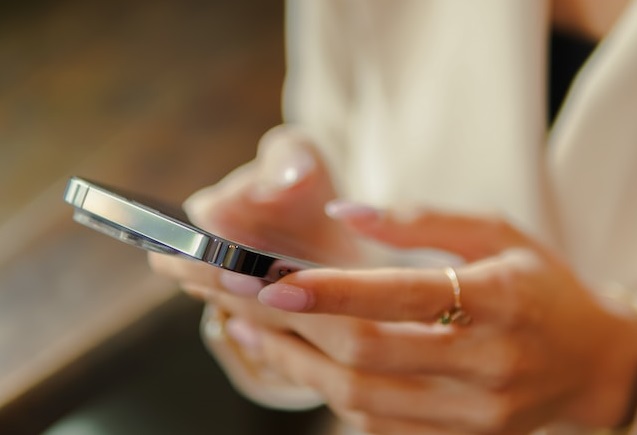How To Build Digital Resilience on Social Media
In partnership with Aspida Advisory Services
The beauty of social media and a smartphone is that it was designed to connect us. And it does so very well. However, the many negatives to this technology have been well documented in the press.
From cyber bullying and constant self-consciousness and comparison to poor mental health and overwhelm from the constant barrage of information at our fingertips, it would be easy to blame the platforms entirely. And whilst they are starting to shoulder their side of the responsibility, particularly when it comes to the more vulnerable members of our society, we have to recognise our own role to protect ourselves as users. And it starts with building our own levels of digital resilience.
But that’s easier said than done. In an online-first world where everyone from your mum, your friends, your colleagues, your kids’ school, your yoga teacher and your favourite shops are all trying to contact you on the same platform or device that you are also using for work, play, research, entertainment and even exercise, it’s easy to a) become quickly overwhelmed with information, and b) view your entire world through one tiny lens. And we can become engrossed in unhealthy patterns and relationships as a result. Which is why we need to take control.

What is digital resilience?
The UK Council for Internet Safety defines digital resilience as “a dynamic personality asset that grows from digital activation i.e. through engaging with appropriate opportunities and challenges online, rather than through avoidance and safety behaviours” but what does that actually mean for us in real life? The more we do it, the better we get at it? Well, kind of. It’s about building up tolerance to what may be presented to us through digital content and platforms and controlling how we react to it, rather than allowing it to control our thoughts, behaviour and emotions.
Here are four steps for building your digital resilience:
1. Recognise Negative Situations And Feelings.
You know that feeling when you suddenly realise you are mindlessly scrolling the apps? Or maybe getting into a heated debate with someone in the comments. - literally or just in your own mind as you read other people’s comments. Or maybe you've gone down a hole and found yourself envying your colleague’s cousin’s friend's latest holiday snaps… it’s when we know we need to snap out of it. That’s a negative situation. It doesn’t have to be an outright piece of trolling or a direct interaction with another human. The content we consume and the thoughts and feelings we have as a result are what add up to contribute to poor mental wellbeing. And as in many toxic situations - the first step is recognising the issue.
2. Remove Yourself From Harmful Situations and Conversations - both physically and mentally.
Once you’ve recognised what’s causing you to have negative thoughts and feelings, the next step is to remove yourself from that situation - often easier said than done when holding a device that is designed to make you keep picking it up filled with apps to stop you closing them. So we need to build up our resistance muscles. From a physical point of view, putting down your phone, closing the apps and standing up to do something else is in fact only a temporary fix. We need to create healthier habits and boundaries around our social media use if we believe it is having a negative impact on our mental health. Some people put it in a drawer once a week. Some people use apps with timers that shut off scrolling after a set duration. Others simply block people that they don’t want to engage with - which makes sense when you think about it. You wouldn’t take it in real life, so why not walk away online?
From a mental standpoint, we need to work harder - and this is where we build digital resilience. We need to switch our focus from passively scrolling to actively scrolling for a while. We need to sit back and reflect on how content makes us feel. Blocking and unfollowing accounts that do not make us feel good is an active choice. Mentally removing ourselves from situations to reflect clearly is how we start to reframe our thinking and reactions. Spending more time on other tasks for our brain and mental wellbeing strengthen us for the time we do spend online. Every little helps.
3. Learn From Difficult Experiences - And Then Move On.
We learn history to learn from it, right? To prevent us from making the same mistakes again. We have to take every experience in life as a learning experience - to make us stronger and develop our spirit and resilience. This is the same online. So whether you bought an online programme that promised you the world and didn't deliver, or found yourself too involved in someone’s life that you don’t know to make a coffee date with a friend in real life or even unfortunately got trolled or hacked, take a lesson from it and move on. It’s an exercise in positivity that will build your resilience for the future. People who have been through hard stuff and come out the other side often don't sweat the small stuff - work out how to think that way too.
4. Implement Preventative Steps.
Our co-founder Stefanie is a long-time online content creator and social media consultant and she has a few tricks that she uses. Namely to unfollow people who make you feel bad - whether it’s their fault or not. Curate your feed to suit the feelings you want to have when you go to it.
“For starters, I have no notifications on my phone except for texts. I have to go into an app to see anything. It’s an extra barrier that helps when you pick up your phone for another reason.
A few years ago, I realised how many people I was following on Instagram (it was over 4000) and I cut it down to around 10% of those who were people I actually knew and people I enjoyed following. I figured if I actually missed seeing someone in my feed, I could always re-follow them, but it really helped me to feel in control of what I was seeing and feeling - and also meant I scrolled a bit less because there were fewer things to look at! I think I sought out just one or two people that I wanted to re-follow from the thousands I cut. Every now and then I have a purge and it instantly makes me feel better.
I also used to plug my phone in the other room from 9pm-9am each day which helped immensely because it gave me space in my day to think and do other things, but now I have a baby and use an app as a monitor, so I have a new digital challenge as it has crept back in!”

Here are some very simple steps that make a big difference when it comes to digital resilience.
- Turn off notifications on apps (you can implement emergency contacts to come through do not disturb mode on your phone)
- Limit time online by simply filling your day with other things and spending more time socialising in real life
- Consider having a private account if unsolicited contact is an issue for you
- Actively block or unfollow people who cause you to have negative emotions.
- You can also block specific words on apps like Instagram so that people cannot comment using them (it simply refuses to publish the comment on their side so you never see it), which is a level of self-protection for people who may find themselves under fire online OR simply not wanting to engage in a certain conversation any more.
If you are concerned about your children and their digital resilience, then read 5 Ways To Protect Your Children Online.
How to make your business digitally resilient from the experts at Aspida
- Make sure your assets are secure - this includes people so invest in cyber security training as well as the right hardware and software.
- Make sure you have clear policies and procedures in place to secure your data that everyone can follow.
Many businesses are on social media these days. Here are some tips for staying digitally resilient on online platforms that you do not own.
- Opt in to two factor authentication
- Don’t use the same password for different accounts
- Try to avoid short simple passwords – mix it up (use numbers, capitals, special characters etc).
Aspida can help advise on all of this. Simply visit aspidagroup.com for more information.
You can view all of our articles for Cybersecurity Awareness Month in partnership with Aspida here.


